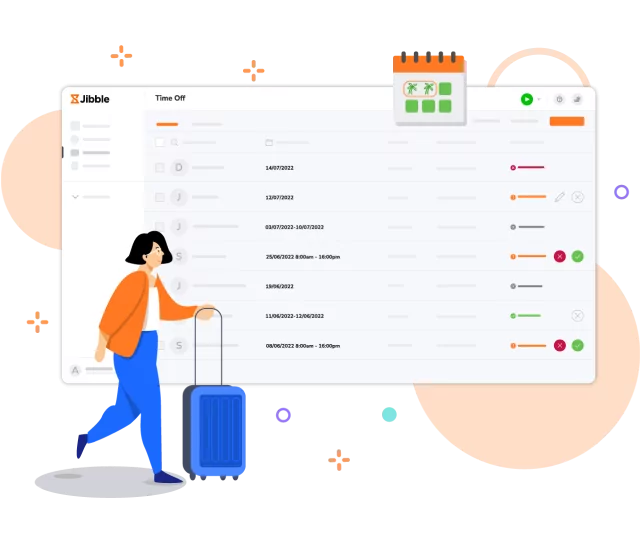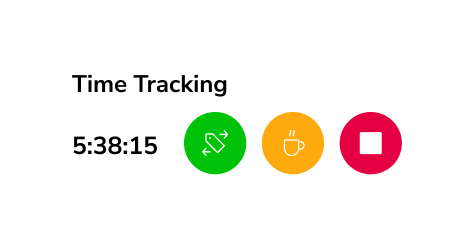
Photo by Tima Miroshnichenko on Pexels
Background
A leading logistics technology company in the United States, established over half a century ago. Trusted by over 80% of Fortune 500 companies and running over 45 facilities established across the US.
The company is recognized for its digital shipping infrastructure, delivering cloud-based SaaS shipping platforms, mail-handling solutions, and specialized sorting services, simplifying logistics and enhancing data protection.
For confidentiality reasons, the company name is not disclosed.
The Struggles with the Old System
Given the complexity of its operations, the company faced several challenges in tracking employee time including:
1# High Costs of Time Tracking Software
The time tracking solution previously used by the company proved costly, especially as the organization scaled. As more team members were onboarded—many of whom were involved in logistics and field operations—the per-user fees became increasingly unsustainable. Additional charges for essential features like leave tracking added to the financial strain.
2# Fragmented Tracking
The previous system did not offer a way to track how employee time was allocated across different tasks, projects, or clients. It was also difficult to track paid time off balances, approve requests, and maintain accurate records. This fragmented approach led to inconsistencies, approval delays, occasional payroll errors and a lack of insights needed for effective resource planning.
3# Connectivity Issues
A major issue with the legacy system was its dependence on strong internet connectivity. Many field employees—especially those operating in remote routes or mail processing centers with inconsistent signal—struggled to clock in and out accurately. These connectivity issues led to discrepancies in time records, delayed data synchronization, and limited real-time oversight for operations managers.
The Company’s Key Time Tracking Requirements
The company highlighted several requirements that they needed in a time tracking solution, including:
- Scalable & Affordable – A cost-effective solution that grows with the workforce, with no hidden fees and essential features included.
- Offline Mode – The ability to track work hours despite spotty or no internet connection.
- PTO Management – A clear and efficient way to track and manage paid time off, leave balances, and time-off requests across teams.
- Activity & Project Tracking – Visibility into how employee time is spent across different tasks, clients, or projects, enabling better project planning and productivity insights.
Why the Company Chose Jibble
Several key factors influenced the company’s decision to choose Jibble for time tracking:
1# Cost-Effective and Scalable
With growing teams across logistics, warehouse operations, and field services, the company needed a flexible solution. Jibble offered a platform that scaled easily as workforce demands changed—without sacrificing essential features.
2# Multi-Platform Access
Given the company’s mix of office staff and mobile workers, accessibility was critical. Jibble supported time tracking across desktop, tablet, and mobile devices, allowing employees to clock in and out from any location or job site.
3# Real-Time Visibility & Data Syncing
By enabling employees to view time entries by project or task, Jibble gave the company visibility into time spent across various operational activities. For a company managing time-sensitive operations, Jibble’s live data access gave managers instant visibility into attendance and timesheets.
4# PTO and Leave Management
Jibble’s integrated PTO tracking streamlined the management of employee leave, vacation days, and time-off requests. Managers could approve leave with a click, while employees could view their balances directly from the platform.
How Was the Onboarding Process?
Discovery & Demo
The company independently discovered Jibble while exploring time tracking tools to support its distributed workforce. After requesting a demo, a Jibble representative walked through key features including activity monitoring, PTO tracking, offline mode, and real-time attendance visibility.
The platform’s functionality aligned well with the company’s operational needs, and no trial period was required. Confident in the system’s capabilities, the team proceeded directly to full implementation.
Seamless Self-Onboarding
The company managed the entire onboarding process internally, without needing support or training from Jibble’s team. This highlighted the platform’s ease of use and flexibility.
Bulk user imports were completed quickly across all departments—from warehouse and field teams to drivers and admin staff. The system was configured in-house with no technical issues reported, and the rollout was completed smoothly and efficiently.
Jibble’s intuitive interface and robust feature set made adoption easy for both managers and frontline staff, enabling the company to get up and running without delays or complications.
The Benefits Immediately Identified Post-Onboarding
After the onboarding process, the company reported immediate improvements in several key areas of workforce management, including:
1. Self-Managed Timesheets: Jibble allowed employees to view, edit, and monitor their logged hours independently, reducing dependency on supervisors.
2. Enhanced Accountability: The combination of self-managed timesheets and project tracking encouraged employees to take full ownership of their working hours.
3. Streamlined PTO Requests: The ability to request and approve paid time off within the same system reduced paperwork and improved transparency.
4. Insightful Project Reports: With time logs categorized by activity or client, managers could analyze productivity trends and optimize resource planning.
Main Method of Jibbling In and Out
The company used Jibble across multiple platforms and staff particularly favored the software’s:
- Web App: Office workers found the Jibble web app efficient for their tracking needed, supported by the chrome extension for ease of tab switching.
- Mobile App: The company’s employees, particularly field-based teams, rely on Jibble’s app to clock in when on-site or on the move.
- Kiosk Mode: Employees on sites routinely used the kiosk efficiently set up for seamless shift clock-ins and clock-outs.
Conclusion
By switching to Jibble, the company successfully replaced its costly time tracking system with a modern, scalable solution tailored to its operational complexity. With PTO tracking, project activity management, offline capabilities, and multi-platform access, Jibble empowered both office and field teams to track time accurately and efficiently—no matter where they worked.
The self-led onboarding process underscored Jibble’s user-friendly design, allowing the company to go live quickly without disruption or support dependency. Post-implementation, the company saw immediate gains in workforce accountability, transparency, and operational control—especially across its distributed sites.
For a logistics technology leader managing time-critical operations and a geographically dispersed workforce, Jibble proved to be a powerful, cost-effective solution that aligned perfectly with both current needs and future growth.



